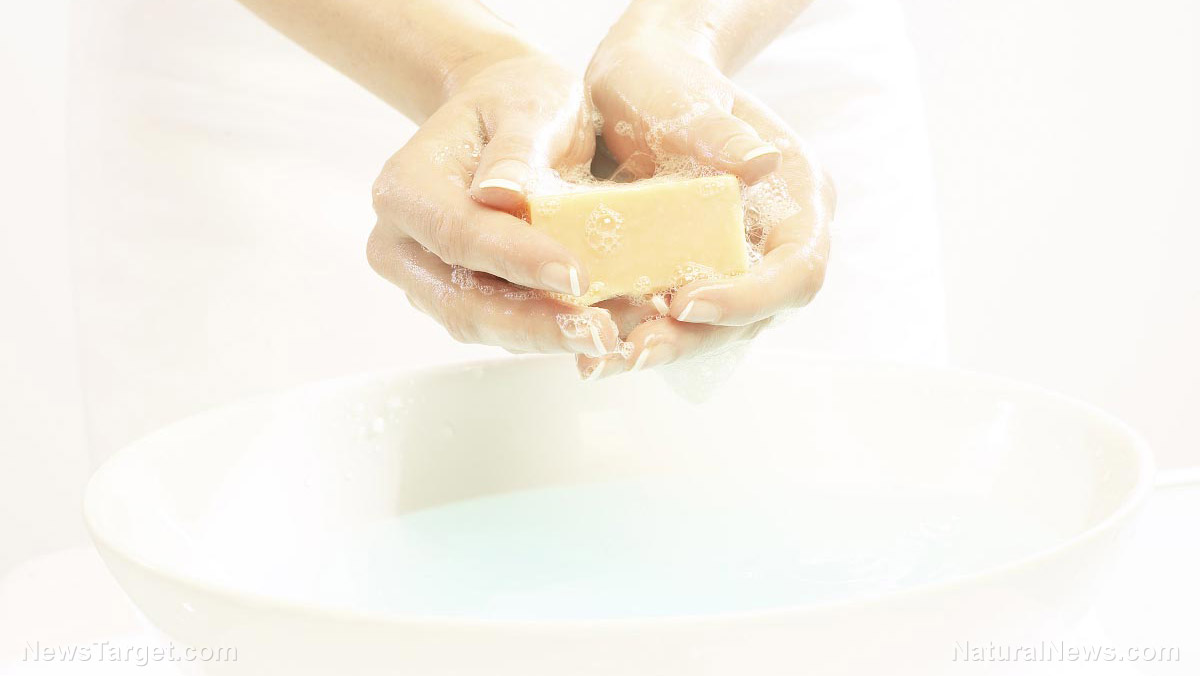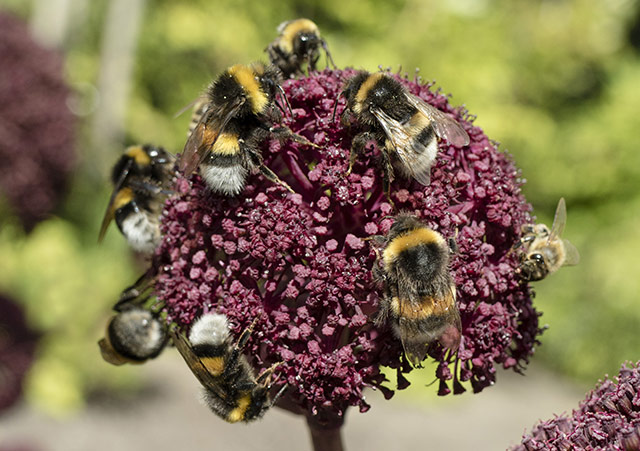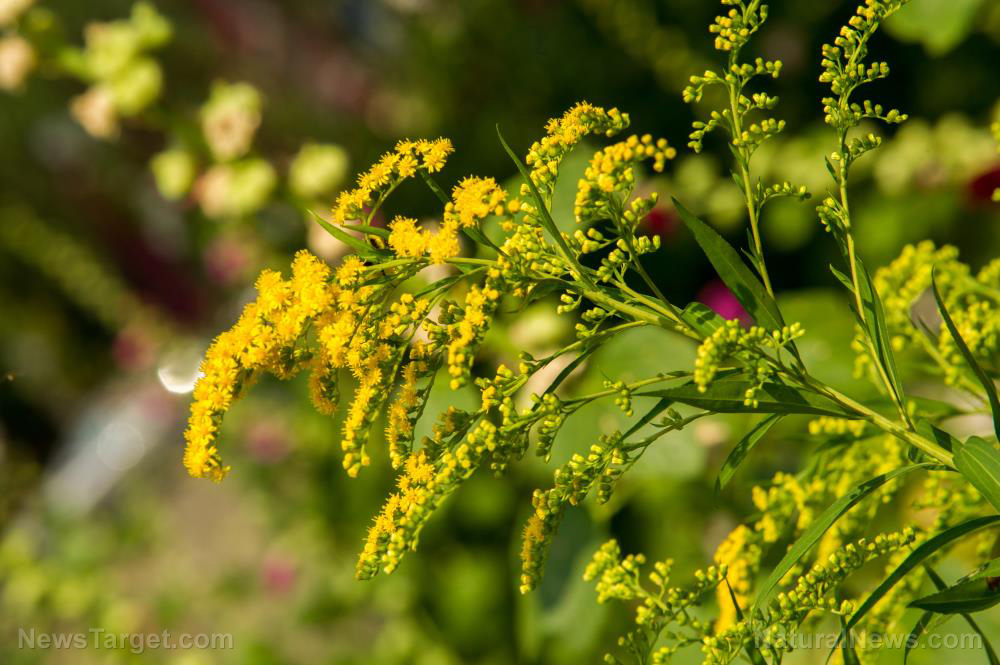
It's good to know which plants can be used as soap even if you're just looking for an environment-friendly and cheaper alternative to store-bought soap. (h/t to UrbanSurvivalSite.com)
But how can plants be used as soap?
The secret lies in saponin, a naturally-occurring compound in many plants, especially those with waxy cuticles. To use these plants, you chop them up and rub the pieces in your hands with water to create a lather.
Here are some common plants in the U.S. that can be used as a soap substitute.
Baby's breath (Gypsophila)
Baby's breath is often used in floral arrangements and this bush plant blooms with delicate white flowers in the summer. It grows hardy in zones 3 to 9 and you can use baby's breath roots to make a soapy solution.
First, boil the roots in water. Stir the water until the foam forms.
Strain out the plant debris, let the liquid cool and use the resulting mixture as soap.
Bracken (Pteridium aquilinum)
Bracken or eagle fern is a fern that grows in the forests and woodland areas of zones 3 to 10. Its underground rhizomes, which have black root hairs, are full of saponin.
To make soap from bracken, dig up part of the rhizome and chop it into small pieces.
Boil the chopped rhizome in water until you have a sudsy solution. Strain the liquid and let it cool suds before using it as a natural soap.
Buffaloberry (Shepherdia rotundifolia and Shepherdia canadensis)
Buffaloberry or soapberry has high levels of saponin. Native Americans also used buffaloberry for medicinal purposes and to make tea.
Use buffaloberry to make a mild, natural soap by boiling the stems and berries in water. Alternatively, you can rub the berries in your hands with a small amount of water to prepare a mild, soapy solution. (Related: How to use plants to maintain personal hygiene even when SHTF.)
Buffalo gourd (Cucurbita foetidissima)
Buffalo gourd is related to pumpkins and squashes. It is also sometimes called coyote melon or calabazilla.
The plant has leaves that are covered with small spines and vines that produce small gourds.
When foraging for buffalo gourd, look for large, heart-shaped leaves and yellow, five-petaled flowers that smell a little funky. It bears fruits by mid-summer.
To make soap, pinch off some leaves. Make sure you avoid the sharp, tiny hairs.
Rub the leaves in your hands with a bit of water to create a green, foamy lather. The younger the leaves, the better the quality of the soap.
Ceanothus (Ceanothus americanus)
Ceanothus is an evergreen shrub that flowers in the spring. Also called soap bush and mountain lilac, ceanothus can be used to create a lather by rubbing the leaves and flowers in your hands with a bit of water.
Clematis (Clematis)
Clematis is a climbing plant that is often used as an ornamental plant. Both the foliage and flowers of the clematis have a high concentration of saponins, making them perfect as a natural soap alternative.
Crush and boil clematis leaves or flowers to make a soapy solution. Another option is to rub the leaves and flowers in your hands with a bit of water.
Horse chestnut (Aesculus hippocastanum)
Horse chestnut is a member of the soapberry family and it produces shiny brown seeds that are high in saponins. The tree bears showy pink or red flower clusters that thrive in zones 3 to 8.
To make soap, remove the green husk of the seed and soak it overnight to soften it.
Once softened, chop or crush the seed with a spoon. Strain out the debris to create a soapy solution.
Alternatively, you can create a quick lather by rubbing the exposed seed in your hand.
Soaproot plant (Chlorogalum pomeridianum)
Soaproot plant is also known as amole, soap root or wavyleaf soap plant and it is usually found in California and Oregon. Soaproot plant has long, wavy-edged leaves and unique star-shaped flowers on a long stalk. Note that the flowers only bloom once a year and only at night.
After you dig up the bulb, remove the brown fibers encasing it. You'll be left with what looks a little like a white onion.
Peel off several layers of the white bulb and rub them in your hands with a little water to produce a rich lather.
Soapweed yucca (Yucca glauca)
You can make a thicker soap from the root of the yucca plant, but you can also just cut off one leaf at a time.
When cutting yucca leaves, carefully avoid the leaf's sharp edges. Snip off the leaf’s pointy tip, then strip the leaf into thin strands.
Rub the fibers between your hands with a small amount of water to create the "soap."
Soapwort (Saponaria officinalis)
Soapwort can be found in many parts of North America, especially zones 3 to 8. The plant blooms with five-petaled pink or white flowers from July to September.
Use soapwort leaves, flowers or roots as soap. Make the green lather by rubbing the plant's leaves and roots in your hands with some water.
Alternatively, you can boil the plant parts in water. Strain out the debris, then set the liquid aside to cool. Use the soapy solution for washing.
Wild mock orange (Philadelphus lewisii)
Wild mock orange is a flowering deciduous shrub that grows primarily in the West and Southwest. The plant's leaves, flowers and bark all contain saponin.
The plant is hardy in zones 3 to 9. To make soap from wild mock orange, harvest parts of the plant and place them in a jar of water. Cover the jar, then shake vigorously until foam forms.
Strain out the plant debris, then use the liquid left behind as soap. The plant produces soap with a pleasant citrusy fragrance.
When SHTF, maintain proper hygiene and use plants like clematis or buffalo gourd as a soap alternative.
Visit HomeGardeningNews.com to learn more about other plants with many survival uses.
Watch the video below to know how to make soap from scratch.
This video is from the SHTFPrepping101 channel on Brighteon.com.
More related stories:
DIY cleaning supplies: 3 Simple recipes for homemade cleaning products.
Stay fresh in the wilderness with natural alternatives to personal hygiene products.
20 Herbal preparations for your herbal medicine cabinet.
Sources include:
Please contact us for more information.























